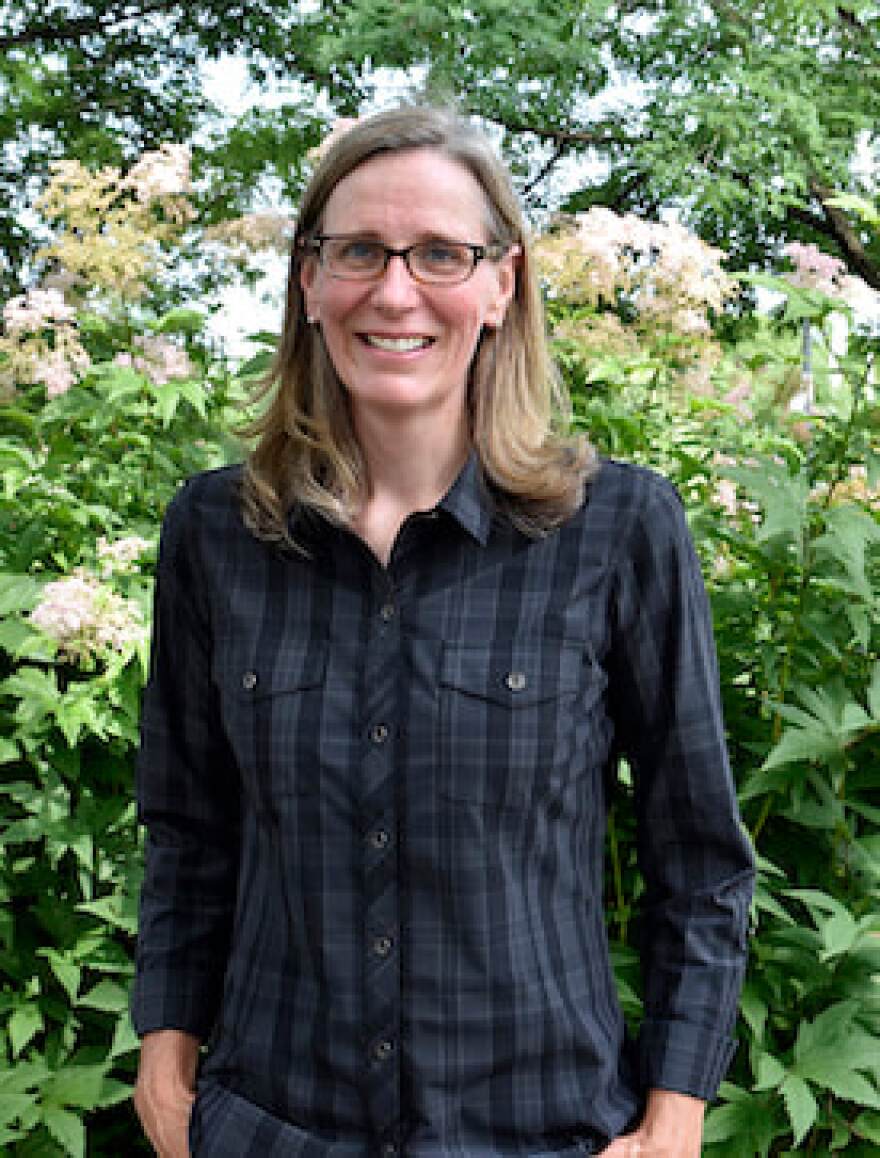Heather Holm, pollinator conservationist and award-winning author, joined the KAXE Morning Show to discuss the importance of native plants for Minnesota’s pollinators.
Holm appeared as part of the second conversation in KAXE's series about the decline of native pollinators.
Pollinator-plant relationships
About 20% of Minnesota’s 500 native bee species are pollen specialists, Holm explained, meaning female bees collect pollen from one type of native plant. For instance, springtime perennials such as the wild geranium and Virginia waterleaf have specialized species of pollinators. Without those specific plants, those bee species would go extinct. Similar species relationships exist for plants and pollinators across the seasons.

Holm first noticed these dedicated species relationships while working in gardens and landscapes.
"For example, every year at the same time I’d see that same species visiting that plant. And that really just led me to ask a lot of questions, many of which I don’t have answers to still,” Holm said “ ... It was just eye-opening for me to understand that we have more than a handful of bees here.”

What do bees eat?
After a long winter spent dormant underground, native bumblebee queens are ravenous when they emerge. Early spring flowers are vital to rebuilding their energy stores as they begin to nest and produce workers. Similarly, late-blooming flowers are important to migrating pollinators such as monarch butterflies. Pavement, development and conversion of native plants to turf grass lawns has reduced these vital food sources, and climate change has led to a mismatch between when flowers bloom and bees emerge, Holm said.
When landscaping with native plants, it’s important to provide both nectar and pollen sources. Adult bees need nectar, while bee larvae need a diet full of protein- and fat-rich pollen. Most plants produce both, but some, like spiderworts and native roses, are nectarless. For those interested in planting for pollinators, Holm provides detailed plant lists at her website.
Creating a restaurant hungry pollinators will love

In her backyard “Garden Restaurant,” Holm’s spring menu for bees includes red maples (which support cellophane bees), willows and a number of early-blooming woodland wildfowers. An ideal garden would have a mixture of spring, summer and fall-blooming plants. Spring plants include native wild geranium, Jacob’s ladder and golden Alexander. In the summer, native mints such as bee balm thrive as well as asters, black-eyed Susans and yellow cone flower. Goldenrods and asters fill out the fall menu.
While pollinators face grave threats, Holm is hopeful about their prospects in Minnesota.
“We have a number of state agencies, such as the Board of Soil and Water’s Lawns and Legumes program, the DNR that’s working on native bees, and then we have an amazing community of both nonprofits and individuals that are really advocating for the importance of native pollinators,” Holm said. “So, this is a great place to live.”
To learn more about Holm’s work and native pollinators, visit her website at Pollinatorsnativeplants.com.
Funding for this project was provided by the Minnesota Environment and Natural Resources Trust Fund as recommended by the Legislative-Citizen Commission on Minnesota Resources (LCCMR).












